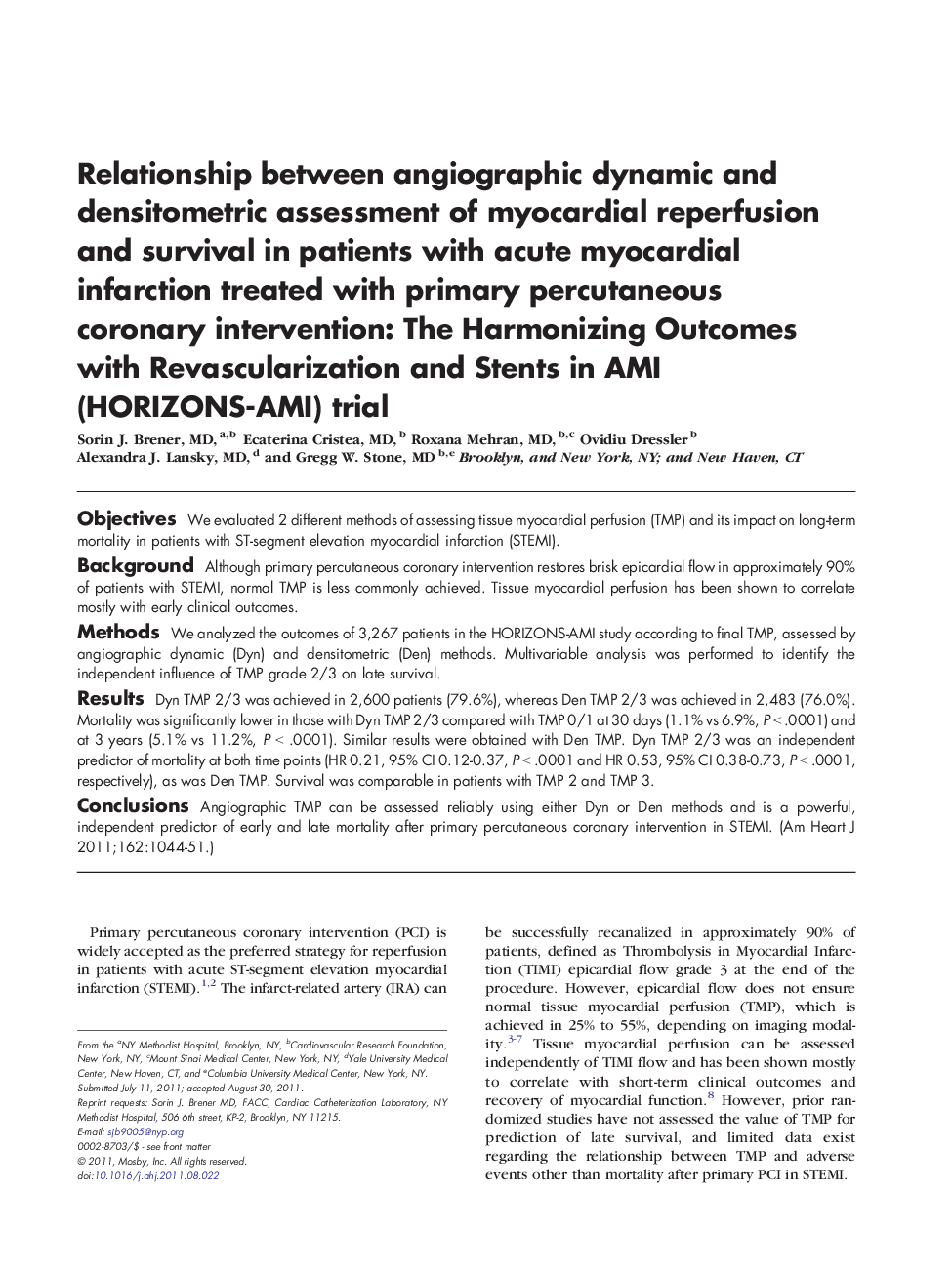| Article ID | Journal | Published Year | Pages | File Type |
|---|---|---|---|---|
| 5927108 | American Heart Journal | 2011 | 8 Pages |
ObjectivesWe evaluated 2 different methods of assessing tissue myocardial perfusion (TMP) and its impact on long-term mortality in patients with ST-segment elevation myocardial infarction (STEMI).BackgroundAlthough primary percutaneous coronary intervention restores brisk epicardial flow in approximately 90% of patients with STEMI, normal TMP is less commonly achieved. Tissue myocardial perfusion has been shown to correlate mostly with early clinical outcomes.MethodsWe analyzed the outcomes of 3,267 patients in the HORIZONS-AMI study according to final TMP, assessed by angiographic dynamic (Dyn) and densitometric (Den) methods. Multivariable analysis was performed to identify the independent influence of TMP grade 2/3 on late survival.ResultsDyn TMP 2/3 was achieved in 2,600 patients (79.6%), whereas Den TMP 2/3 was achieved in 2,483 (76.0%). Mortality was significantly lower in those with Dyn TMP 2/3 compared with TMP 0/1 at 30 days (1.1% vs 6.9%, P < .0001) and at 3 years (5.1% vs 11.2%, P < .0001). Similar results were obtained with Den TMP. Dyn TMP 2/3 was an independent predictor of mortality at both time points (HR 0.21, 95% CI 0.12-0.37, P < .0001 and HR 0.53, 95% CI 0.38-0.73, P < .0001, respectively), as was Den TMP. Survival was comparable in patients with TMP 2 and TMP 3.ConclusionsAngiographic TMP can be assessed reliably using either Dyn or Den methods and is a powerful, independent predictor of early and late mortality after primary percutaneous coronary intervention in STEMI.
